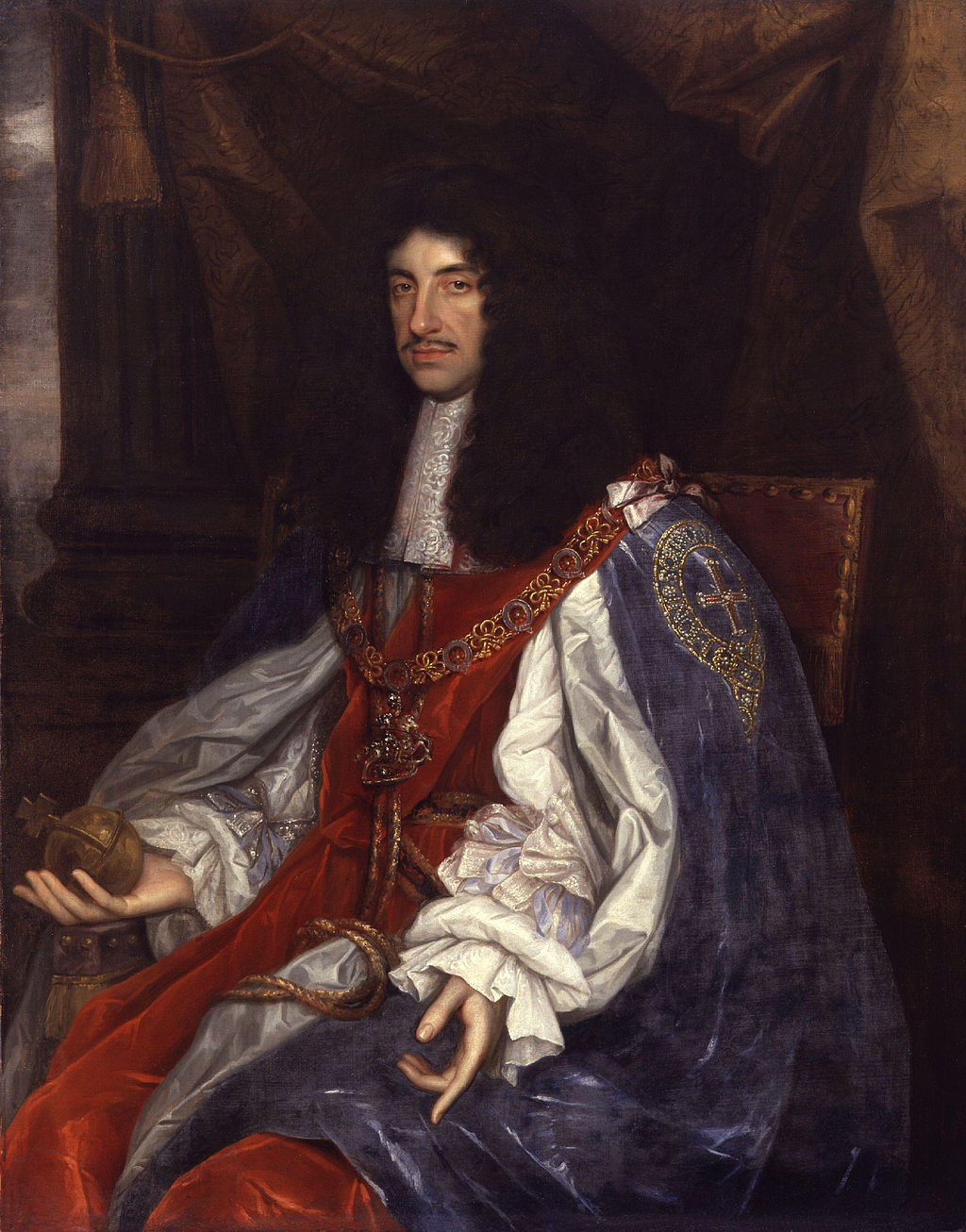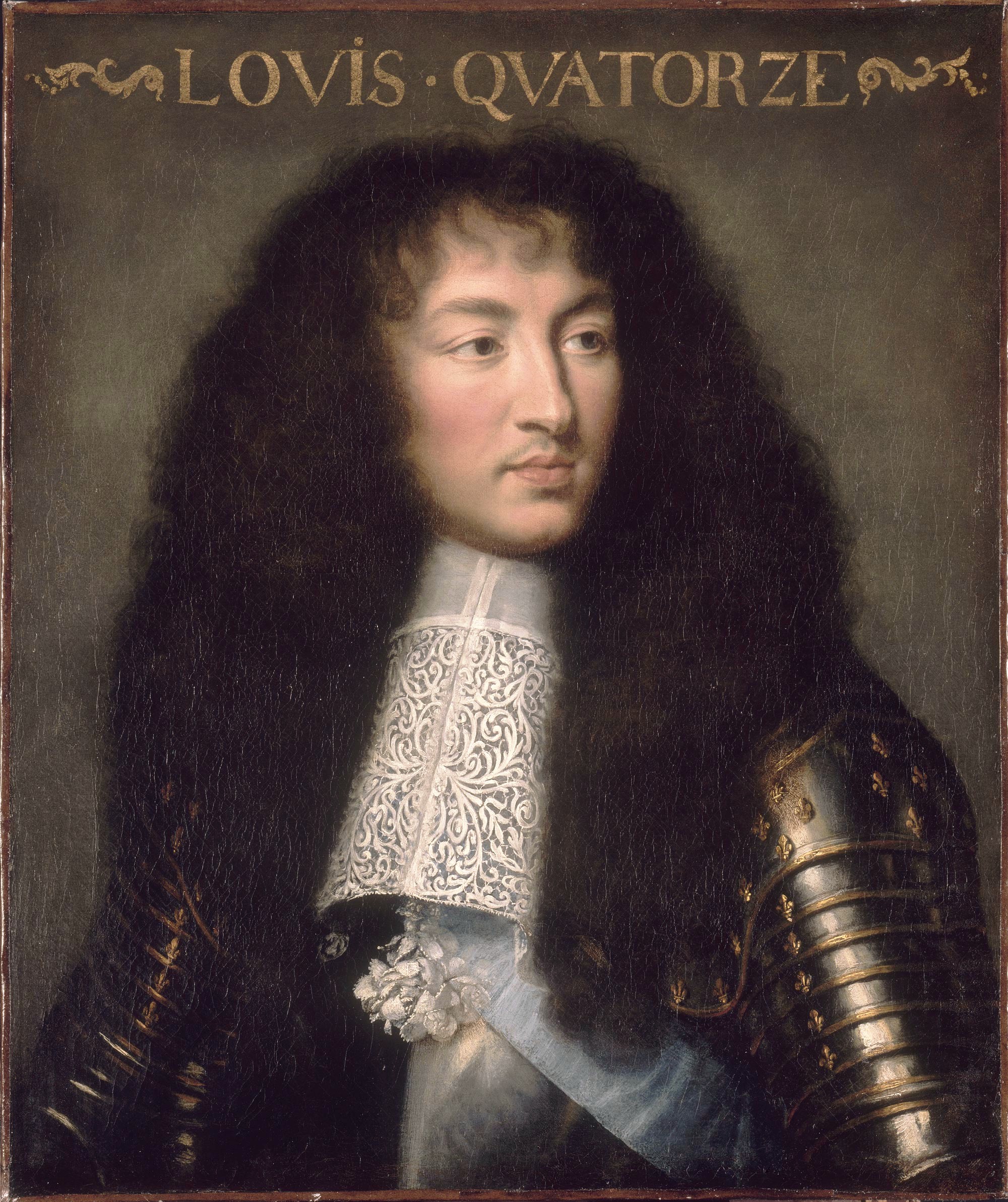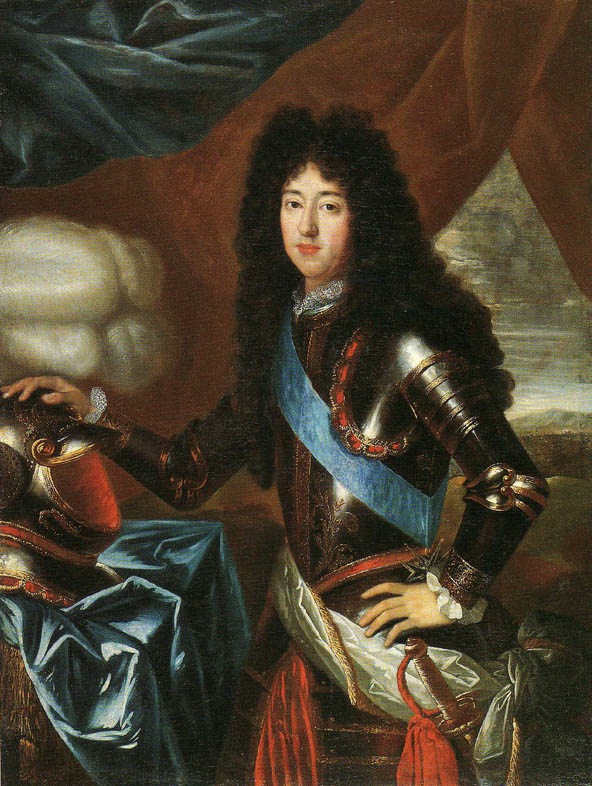Anne Marie Louise d'Orléans was the daughter of Gaston d'Orléans as well as the cousin of Louis XIV. She held the title of Mademoiselle de Montpensier during her father's lifetime but was afterwards known as La Grande Mademoiselle. For the majority of her life she was considered one of the most desirable brides in Europe: her fortune certainly made her the richest heiress.
Naturally, there were quite a few plots to marry her off advantageously but none succeeded. Unusually, the young woman refused a long line of very good matches and would eventually fall completely in love with the Duc de Lauzun. However, before that it is well worth it to look at who could have called La Grande Mademoiselle their wife.
 |
| La Grande Mademoiselle |
Charles II of England
One of the earliest bids for a bridegroom for Mademoiselle de Montpensier was made by the French-born queen Henrietta Maria of England who happened to be her aunt. A marriage proposal was quite early on suggested between the two cousins but the breakout of the English civil war put those plans on hold.
In 1649 Anne Marie Louise met with her aunt to pay her respects since Charles I had recently been executed. While there, the exiled queen brought up the subject of marrying Anne to Charles who was now technically king.
Anne returned to court at Compiègne with Lord Jermyn and found that the proposal was on everyone's lips. Anne of Austria strongly urged to her accept and Cardinal Mazarin back up the queen by going so far as to promise that France would help Charles regain his throne. Gaston d'Orléans was not there in person but he left his representative - the Abbé de la Rivière - to speak for him. As the abbé reminded the young Mademoiselle there was no other likely candidate at the time since the Holy Roman Emperor had recently remarried and his son was engaged.
It was suggested that Mademoiselle was to be taken to Paris where a proxy ceremony would take place to marry the two cousins. Charles II himself was in the Netherlands where he was busy planning an invasion from Ireland. However, Anne was not pleased with the arrangement. She had never been fond of Charles and there was another great consideration: Charles was king in name only. He still had to fight to retake his throne and if the couple married then Mademoiselle's fortune would be spent attempting that. Even then, there was no guarantee that it would be successful. Eventually, Mademoiselle rejected the idea of a marriage to the English king but then faced the problem of turning down her aunt without causing a diplomatic - and family - rupture.
Anne found quite a clever way around it. She informed Lord Jermyn that she would only marry Charles if he became a Catholic. All the while she was very well aware that that was completely impossible due to the situation in England. Consequently, the match was rejected and Charles II went on to both regain his throne and marry Catherine of Braganza.
However, before that marriage took place a final offer was sent to France to make Anne queen. To her credit she refused arguing that since she had rejected him as a refugee it would not be prudent to suddenly accept him as king. Charles himself was glad of it; he had been deeply offended by his cousin's snub during his years away from England and thought very lowly of her.
 |
| Charles II |
Louis XIV of France
Of all the rulers who were considered for her hand, that of Louis XIV was most appealing to Anne. Becoming queen of France would certainly have been a way of gaining everything she wished for: she could remain in France with her immediate family and her fortune would not be wasted.
However, La Grande Mademoiselle was eleven years Louis' senior which was considered a major drawback. Already during the negotiation for a marriage to Charles II did Gaston d'Orléans mention that Louis was too young.
In the end it was Anne herself who decided the matter. When the Fronde broke out Mademoiselle's actions was considered to be border lining treason even though she never plotted to kill the king and queen mother. Although she was welcomed back to court after the conflict was over all hopes of marrying Louis was definitely gone.
Thus, having another proposal to marry her cousin go down the drain, Louis XIV married Marie Thérèse - his cousin.
 |
| Louis XIV |
Philip William of the Palatinate, Duke of Neuburg
This particular offer was quickly and smoothly rejected by the determined princess. Having been considered a likely candidate to marry two kings it was absurd that Anne would go on to marry a duke of a duchy that was neither powerful nor particularly wealthy.
Her father persuaded her to at least meet with the envoy of the duke - a jesuit priest who did everything he could to paint Düsseldorf (the duke's main seat) as prettily as possible. He even mentioned how happy the duke's first wife had been to be married to him but to no avail.
 |
| Philip William of the Palatinate |
Prince de Condé
Two members of the Bourbon-Condé family was considered for Mademoiselle. One was the Grand Condé himself whom Anne had always thought well of. The problem was that he was already married at the time. While it was speculated that Anne could marry the Prince de Condé should something happen to his wife it was never further discussed.
Turning the attention from the father to the son, another candidate was Henri-Jules de Bourbon-Condé, Duc d'Enghien and the only heir to Condé. It was quite the hot topic for a while until the young Duc d'Enghien was suddenly married to Anne of the Palatinate in 1663. The royal family attended the ceremony but it must have been an awkward affair since Anne of the Palatinate was the daughter of the queen of Poland - who had been in support of the Fronde.
Mademoiselle was disappointed but not because someone else was chosen instead of her. She found it deeply mortifying that Condé would accept the immense dowry offered by the queen of Poland in favour of a marriage to a granddaughter of France. To Mademoiselle her rank meant that she would always be the preferable choice to foreign money.
 |
| The Grand Condé (left) and his son (right) |
Philippe d'Orléans
It comes as quite a surprise that Philippe was considered as a bridegroom when his older brother had already been thought too young. However, the difference was simply timing. When Henrietta of England died in 1670 the hunt was immediately on for a new Madame for the court. La Grande Mademoiselle - still unmarried - was considered the most likely choice. Louis XIV approached her in the days after Madame's death and remarked that a position was vacant - would she like to fill it?
Mademoiselle tried to be evasive in her answers but the king took the silence for acceptance and promised her that he would approach Philippe about it.
Not long after Anne was approached by a member of Philippe's more dubious entourage. The Comte de Beuvron paid her a visit to assure her of both his own and the exiled Chevalier de Lorraine's full support. To Mademoiselle that was humiliating; that a granddaughter of France should need acceptance from a mere Comte and a chevalier was too much to be borne.
The insolence was not the only concern she had although the other centered around the same people. Anne had been witness to the unhappy first marriage of Philippe and had seen how much power his lover and his friends had over him. She also knew full well of her cousin's taste for an extravagant lifestyle and worried that he would spent all her money in an instant.
Philippe himself reacted with the same evasiveness at first to the project. He asked that the marriage should be postponed at least till the end of winter out of respect for his late wife to which both Mademoiselle and the king agreed. When Anne returned to court it was clear that Philippe's interest in the marriage was primarily material. He requested his brother to promise that if they should have no children then Anne's fortune would be left to his children. Mademoiselle replied with a smile that she found it very unusual to be on the brink of marriage and not considering having children.
There was one element that must have had an influence on Anne's final answer. She had already fallen in love with the Duc de Lauzun and was convinced that her fortune would be enough to raise him to her social rank. Louis XIV had already given Anne his word that she would be free to choose herself. After span of a few weeks she remarked that she wished nothing more to be said about it. And that was that.
 |
| Philippe d'Orléans |
Philip IV of Spain
In 1644 the queen of Spain died which left a vacant spot - one that Mademoiselle could very well fill. She herself recorded in her memoirs that Anne of Austria deeply wished for the marriage to take place and that Cardinal Mazarin supported her - however, suddenly, the two stopped talking about a prospected match all together and Mademoiselle was left to wonder what happened.
 |
| Philip IV of Spain |
Charles Emmanuel II, Duke of Savoy
In 1664 the Duke of Savoy had suddenly become a widower when his new wife - Anne's own half-sister - had died shortly after their marriage. Louis XIV was eager to bring the duchy of Savoy back under the French crown and thought Anne would serve the purpose for just that. Until this point Mademoiselle had been in exile but was called back to court rather unexpectedly - the courtiers surmised that the king had marriage in mind.
They were right; once the estranged cousin had been welcomed back to court Louis XIV immediately had an audience with her where he announced his intentions. He argued that since the duke's mother had died recently, she would enjoy greater freedom in her new home than her half-sister had. Apparently, Mademoiselle made no response that deterred the king, so he set his ministers on the task of facilitating the marriage. Not everyone was pleased at the prospect. Gaston d'Orléans new wife - Anne's stepmother - was outraged that her daughter would so soon be replaced and by none other than her stepchild. Her quarreling became so pronounced that Louis XIV had to step in and quiet her.
But there was another, more vital protester: the Duke of Savoy. He had no wish to espouse La Grande Mademoiselle due to the injury that the French royal family had inflicted upon his house. His sister had been suggested as a bride for Louis XIV and had even travelled from Savoy with this view in mind; but, in the end, Louis XIV married his Spanish cousin instead. The Princess of Savoy became the Duchess of Parma which the Duke of Savoy was not informed of before after the fact. He had been deeply insulted and still held a grudge.
He also argued that Mademoiselle was older than he which was a major drawback since he wanted children. Finally, she had apparently snubbed him when she was younger which had wounded his pride.
It ended with a refusal from the Duke of Savoy which tensed the personal relationship between him and the king of France.
 |
| Charles Emmanuel II |
Alphonse VI of Portugal
The king of Portugal was definitely not Mademoiselle's intellectual equal. He was feeble in mind and body but that was exactly why Mademoiselle was thought to be the perfect bride for him. She had a strong intellect and an even stronger willpower - thus, she could take the reins of government and finally achieve the power she had always sought. It was actually Turenne who came to inform Anne of his decision to marry her off. Although she was technically his superior in rank, he was older than she.
Anne had never been close to her relation Turenne and flatly refused him. As it would happen his skills as a diplomat was found to be seriously lacking. He retorted that "ladies of her rank had no other will than that of the king" to which she immediately asked if the king had desired the marriage. He had not.
That in itself would have been enough to end the matter and Mademoiselle gave two particular reasons for continuing her refusal. First, she feared that she would be caught in an eternal war between France and Spain (who had not accepted Portugal's independence). Especially the Spanish reluctance to accept Portugal's status caused her concern. What if she were to squander her vast fortune only to be dethroned and sent back to France? Then she would be penniless and had to live with a "stupid and paralytic husband" only on royal charity.
It was too much for her pride to bear and she refused to listen to any more arguments.
 |
| Alphonso VI |
In the end La Grande Mademoiselle remained unmarried to her dying day. She left her vast fortune to Philippe d'Orléans and his children. Nothing can sum up her attitude towards marriage was well as her own words to Cardinal Mazarin in 1661: "There were moments when I really wished to marry, and others when I did not care at all.."

No comments:
Post a Comment